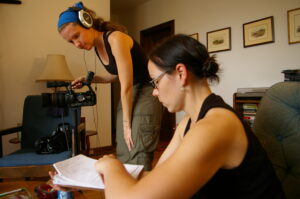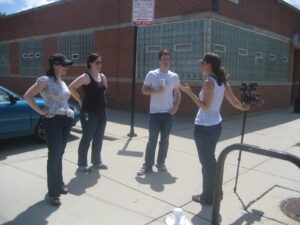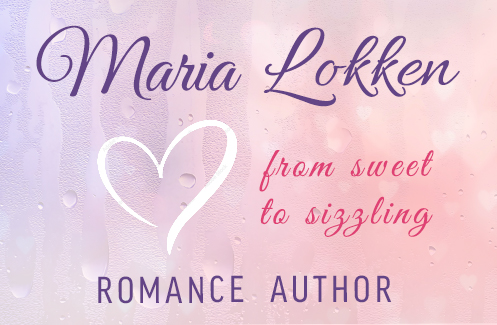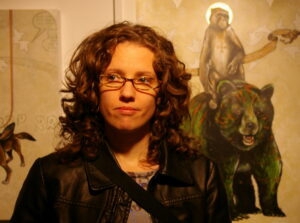Art speaks to the human experience. It also encourages interaction. We share it, look at it, link to it, and talk about it. What’s ironic is that, for many, art production is often a task carried out in private. Not for Julie and I – for us, filmmaking offers the opportunity to explore stories with other people, not only after the film is finished, but during the development and production.
Wouldn’t it be easier if the two of us just wrote our movies and filmed them without input from our friends, actors, composers, props people, etc.? Possibly. Maybe it’d be even smoother if one of us wrote the movie and then the other directed it. Less talking, more filming. But then our final product wouldn’t be as rich, and the process, not as fun. We’re more interested in storytelling that is shared.
Since we’re a screenwriting duo, it’s natural that we start with each other. All of our screenplays begin when one of us has a small, creative flash – an image, a concept, a personality with intriguing implications. Once the idea is shared, it enters the world and becomes a dialogue between two. We explore the ideas in depth, create characters, construct scenarios. It is a shared process, dialogic from the outset.

Discussion doesn’t stop once the script is finished. Because we produce our own short films, we get to share and explore the ideas once again – with actors, cinematographers, composers, our friends. It is at this point that the work changes and deepens once more. And the deepening is manifold.
• While making Libidoland, we had many insightful conversations with our lead actress about her experiences as a dominatrix. We learned about both the motivations for doing that kind of work as well as what the clients were into and expected. Most importantly, we talked about the prevalence of different tastes and desires beyond what’s considered “normal,” an issue that lies at the heart of the film.
• While making Sound Sleeper, my sister and I found ourselves laughing until we cried about comical memories from our childhood and comparing them to what our parents remembered. My dad, of course, had no recollection of being the cause of so much nighttime drama.
• While making Snow Bunny, the people who wanted to contribute the most were my nieces who played Mandy and Delilah. Being from a broken home themselves, they immediately understood the tension, the anxiety, and the isolation their characters felt. Both girls brought a lot to their roles – sometimes too much, as my eldest niece sometimes wanted to use the film as a vehicle to vent her anger at her own neglectful parents.
Though these discussions and conversations in the midst of filmmaking are not always whimsical or fun, this is where the true joy of filmmaking lies – in connecting with others and exploring what it means to be human.

The final step, of course, is to find an audience, share our work, and get their thoughts. Although we’ve enjoyed a relatively small audience for our films, an extraordinary amount of discussion has been generated, especially for Snow Bunny and Libidoland. We love that people have a lot of opinions, and we aim in the future to open our world, find a larger audience, and engage with even more people.
So what happens after we get our audience’s feedback? Well, we want to make another movie, of course. Back to the drawing board…
Thanks to Jessica and Julie for joining us today. To find out more about the filmmaking team of King is A Fink visit their website. I also strongly recommend you follow them on Twitter – they’re smart, funny, and understand the art of communication and the tweet.
View their work:




2 thoughts on “Shared Storytelling: A Bicycle Built for Two…or Two Million by Jessica King of King is a Fink”